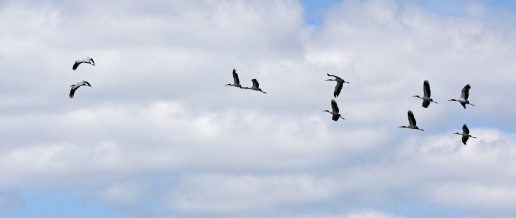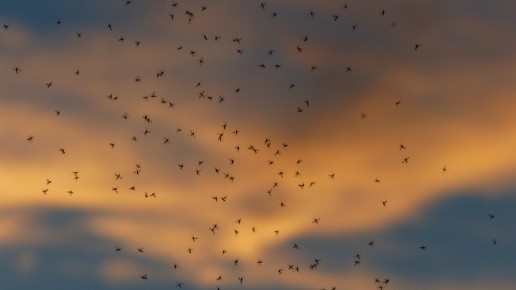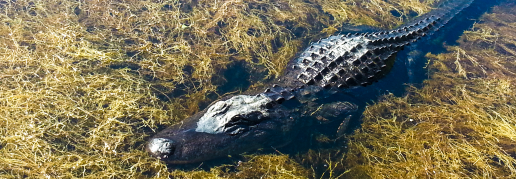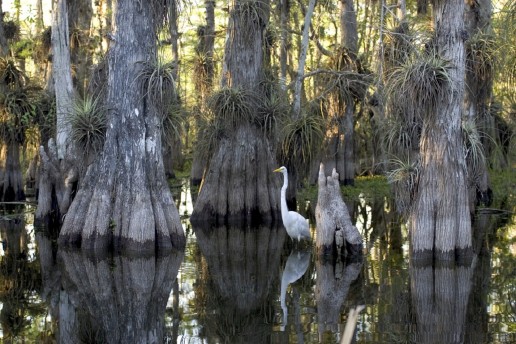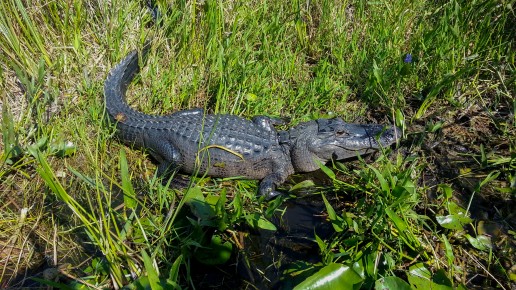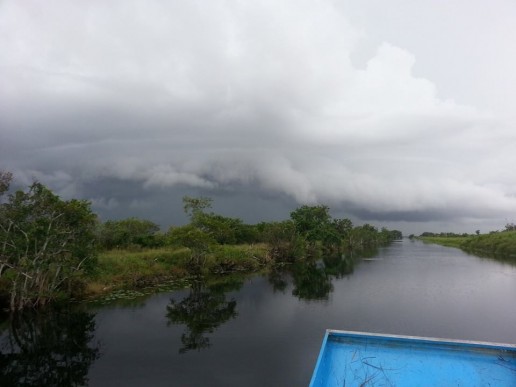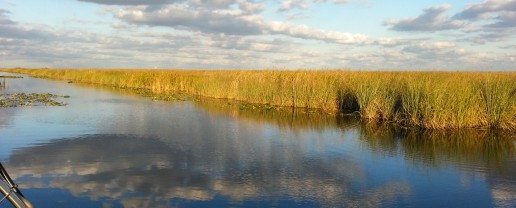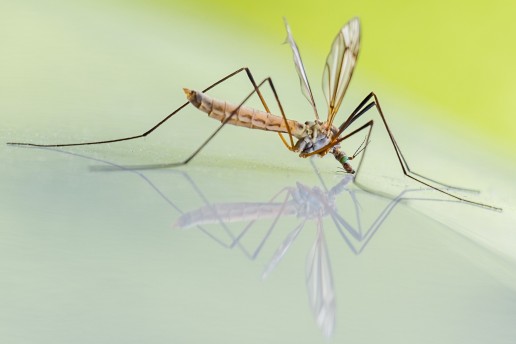Tips to Spot Everglades Wildlife on an Airboat Tour
The Florida Everglades is filled with an impressive variety of wildlife, including birds, reptiles, and even mammals. You may spot many animals out in the open, and some hiding in the sawgrass while taking an Everglades airboat tour in Miami. But there are a few things to do and consider before taking an airboat ride that will help your chances.
Consider the Time of Year
Everglades Birdwatching
Over 350 species of birds have been sighted in the Everglades. The largest and most diverse concentration of birds occurs here during Everglades dry season, from December through mid-May. The cooler air brings in migratory birds like bluebirds from the north, and even tropical birds like Flamingos from the Caribbean. The lower water levels of the dry season help local wading birds like the Great Blue Heron and Roseate spoonbill nest and raise their young.
But, we can’t forget the most famous species of Everglades wildlife…
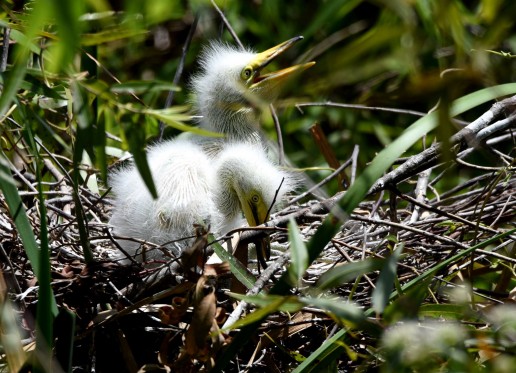
Best Time to Spot Everglades Alligators
Alligators often prefer the cooler temperatures of the dry season, but are active for much of the year. Alligator mating season in the Everglades lasts from mid-April through May, followed by nesting season from June and July. By August, you’ll see baby alligators swimming and hear their tiny roars coming from the sawgrass.
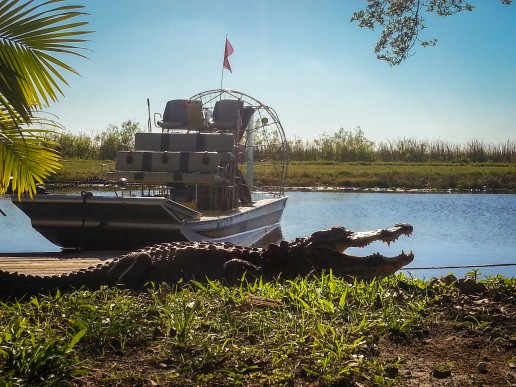
Become Familiar with Everglades Wildlife
When you take an Everglades airboat tour in Miami, you will be guided be true blue Gladesmen that are very knowledgeable of Everglades wildlife. They can help you identify animals and answer questions you might have about them. But, if you do a little studying on the animals you’d like to see beforehand, you can spot them on your airboat ride more easily.
Consider the Temperature
With average temperatures in the 80’s or higher, the summer in South Florida can get very hot, especially for the animals. Summer temperatures can also stretch into late spring and early fall, too.
Like Florida’s human residents, most animals spend much of the day trying to keep cool and avoid the sun. As a result, many birds and other Everglades wildlife are most active in the morning and early afternoon during the summertime.
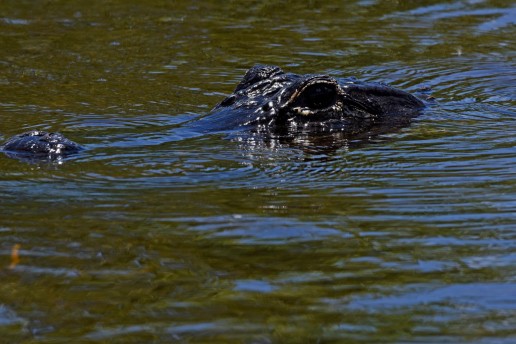
Keep a Lookout for Movement
Alligators can spend a lot of time in the water, and can be so still they’re often mistake for logs! That ripple you just saw in the water might not have been a large mouth bass. Wading birds like egrets and herons also stalk their prey so slowly that you can miss them standing by the cat tails and sawgrass.
And keep an eye out for color differences of objects you see against each other. Birds can’t be sneaky and pretty at the same time if you’re watching closely!
As incredible as the Everglades are, the biodiversity of this ecosystem makes it even more unique. It’s a sure bet that you’ll see a good number of animals while airboating in Miami. Make sure to keep an eye out for them, and remember that timing is everything!
Keep the season and time of day in mind when planning your Everglades trip. But no matter when you take your airboat ride at Mack’s Fish Camp, you’ll get to see these animals up close and in their natural habitat.
Islands on The River of Grass: Everglades Tree Islands
There is a common misconception that the Florida Everglades is just a giant, grassy swamp. It’s actually made of several different habitats, each full of distinct flora, including trees. When you visit the Everglades, you’ll notice many clusters of trees standing tall against the wet prairie and sawgrass marsh. These small hammocks are known as Everglades tree islands.
What Are Tree Islands?
Tree islands are small forests that sit on land just dry enough for them to take root. But, there’s more to it than that. Everglades tree islands are formed on land that is elevated just slightly, in some cases only by inches!
They can be made of tropical hardwood trees, ferns, cypress, and other topical plant species. Before the Everglades were drained in the 1920’s, the freshwater sheetflow went around the tree islands. As a result, many of them have an elongated, teardrop shape, with the rounded end pointed toward the water flow.
A Shelter for Everglades Wildlife
Being the only spots of dry earth outside of the pine rocklands and hardwood hammocks, tree islands can act as a dry oasis for Everglades wildlife. Reptiles, birds, and mammals that feed in the wet prairie use them for shelter to rest or hide from predators.
Many birds, including the Everglades snail kite, nest on these islands. White tailed deer also frequent them, because if they spend too much time in water they can develop hoof rot, which can be fatal.
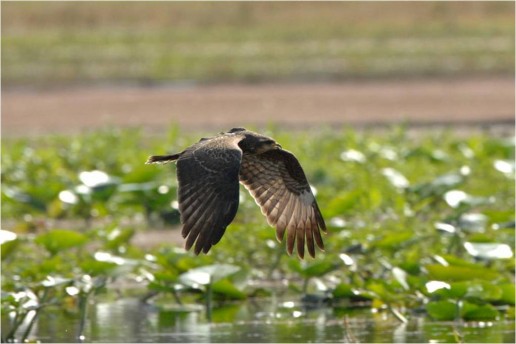
Where Did They Come From?
The ground that Everglades tree islands rest on was long-believed to be bedrock that slowly rose over time. It was recently revealed by a team of scientists that these spots were middens, garbage piles from centuries-old human settlements. The researchers found bones, shell tools, and charcoal, which would’ve helped create an elevated dry area where plants could grow.
The phosphates from the bones acted as fertilizer, and the roots reached further into the bedrock for water. This setup helped tree islands to not only form, but continue to thrive now!
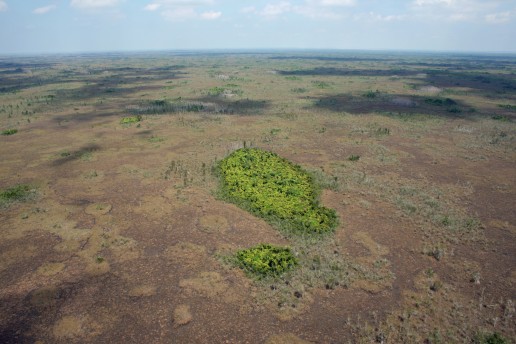
Everglades tree islands don’t just add an air of mystery to this ecosystem. They enhance its unique beauty as well as its elevation, and also provide homes to countless animals. Taking a private airboat tour at Mack’s Fish Camp can give you the chance to see them up close!
Colorful and Creepy Crawly: Everglades Insects
They can crawl, fly and even swim. Some of them look strange, some of them beautiful, and there is a variety of Everglades insects you’ll see when you visit Mack’s Fish Camp in South Florida.
While there are large animals in the Everglades that are better known, like the American alligator and the manatee, we can’t overlook these little guys. Insects play a big role in the Everglades ecosystem, which stretches over many different habitats.
As a link in the Everglades food web, insects are not only a food source for fish, reptiles and amphibians. They also act as pest control for Everglades plants by eating other insects as well as helping with pollination.
Butterflies
There are nearly 100 different butterfly species in the Florida Everglades, a diversity as incredible as their many patterns and colors. Most butterflies are diurnal, so they’re easily spotted during the daytime. Butterflies are very mobile, choosing where they live based upon available resources.
Some species prefer specific types of host plants to rest in, like the ruddy daggerwing. It prefers strangler figs, wild banyan trees, and common figs or their host plants.
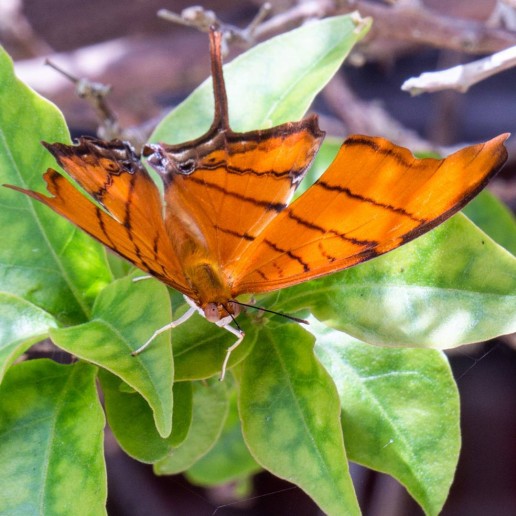
Whirligig Beetles
While you’re on an airboat ride at Mack’s Fish Camp, you might notice what looks like bubbles zipping around in circles on the water. They’re actually whirligig beetles, aquatic insects that dwell on water surfaces.
Whirligig beetles have divided eyes that can see above and under the water at the same time! If threatened, they can dive underwater and stay submerged because of a small air bubble they trap between themselves and the surface.
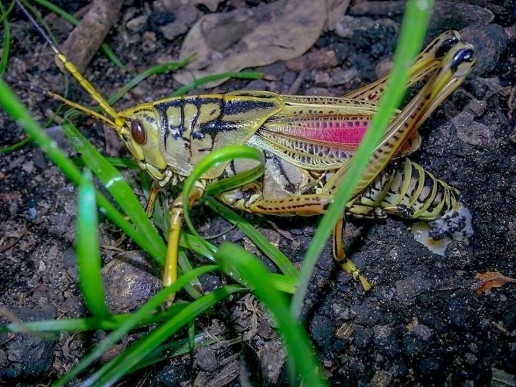
Lubber Grasshoppers
Proof that not all colorful Everglades insects move gracefully through the air, the lubber grasshopper is easy to spot. They sport bright greens and yellows with hints of red, and grow up to 3 inches in length. Lubber grasshoppers get around by jumping and walking, but they’re not very quick. So, you could easily snap a good picture of one should it cross your path.
You might think the lubber grasshopper is an easy target for predators, given its bright colors and slow movement. But, they are very toxic to eat and their vivid colors act as a warning to discourage anything from trying!
Mosquitoes
The most well-known, and infamous of Everglades insects is the mosquito. Despite being a pest to humans, they are arguably the most important insect in the Everglades food web.
By laying their eggs and dwelling near water, mosquitoes are a vital food source to fish, frogs, lizards, and other insects. They are most abundant during the wet season, but their numbers drop sharply in the cool, dry winter months.
They may not be the first sort of Everglades wildlife you hope to see when you visit the River of Grass. But, insects are as much a part of Everglades ecosystems as egrets and alligators. Even if creepy crawlies aren’t your thing, they can still be a pretty sight to behold!
Types of Everglades Reptiles You'll see on an Airboat Ride
A lot of cold-blooded creatures love being in the subtropical climate of South Florida, and it’s not just the tourists. More than 50 different species of reptile live in the Florida Everglades. Reptiles are among some of the most well-known animals found here, and come in a variety of colors, shapes and sizes.
On a private airboat tour at Mack’s Fish Camp, you’re likely to see several of these Everglades reptiles. Here are the different types of them that call the Everglades home.
Turtles
These shelled reptiles can be found swimming in freshwater marshes and swamps, or basking in the Florida sun near water. The most common turtle species in the Everglades is the striped mud turtle. It can be identified by the three yellow stripes that run down its back and stripes on its face.
The Florida soft-shelled turtle is a more unique species, having a long neck and snorkel-like nose. The only time you’ll spot one on land is when they lay their eggs, as they spend almost all of their time in water.
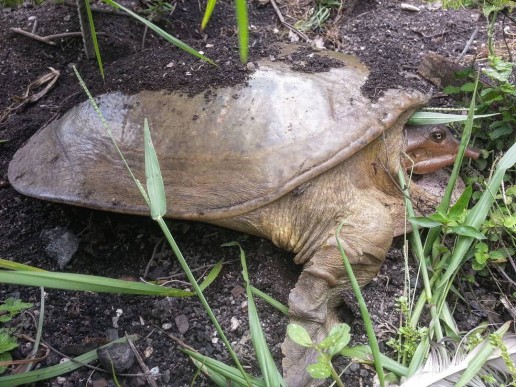
Crocodilians
Being the order of reptiles that alligators and crocodiles belong to, that makes them the most popular of Everglades reptiles by default. Crocodilians are defined as being predatory, semi-aquatic reptiles. As you can imagine, the Florida Everglades is a paradise to them, and they are the kings of it!
While crocodiles prefer the saltwater portions of the Everglades, alligators can be found floating in freshwater marshes or basking in the sunshine. Crocodilians sun themselves to regulate their body temperature.
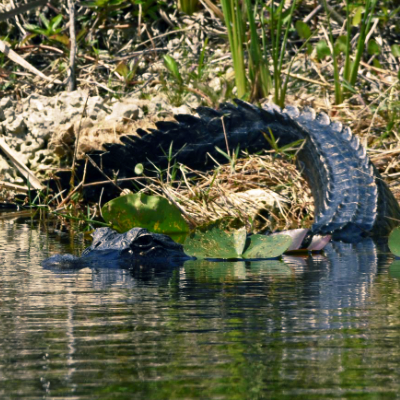
Snakes
Second only to mosquitoes, Everglades snakes are the least-liked creatures here, and perhaps even more misunderstood. All of them are shy and not aggressive unless threatened or disturbed, even the venomous ones.
There are only 4 species of venomous snakes out of the nearly 30 species found in the Everglades. Venomous snakes like the Cottonmouth and non-venomous ones like the red rat snake help manage the Everglades rodent populations. Their shyness and camouflage patterns let them hide in sawgrass marshes and even in the trees of hardwood hammocks.
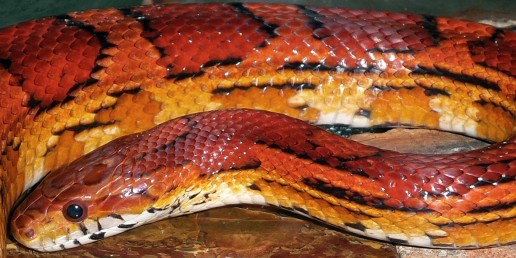
Lizards
We can’t leave out these (mostly) little guys. They may not be intimidating dinosaurs like alligators, but there are nearly 20 lizard species in the Everglades. So they have strength in numbers. Green anoles and their nonnative cousins the brown anole can be spotted in trees by their bright red throat pouches.
Their much larger, invasive cousin, the knight anole, is often found on tree trunks hunting insects and other anoles. Despite being around 18 inches in length, knight anoles can camouflage themselves well. However, they can be spotted by the yellow flash marks under their eyes.
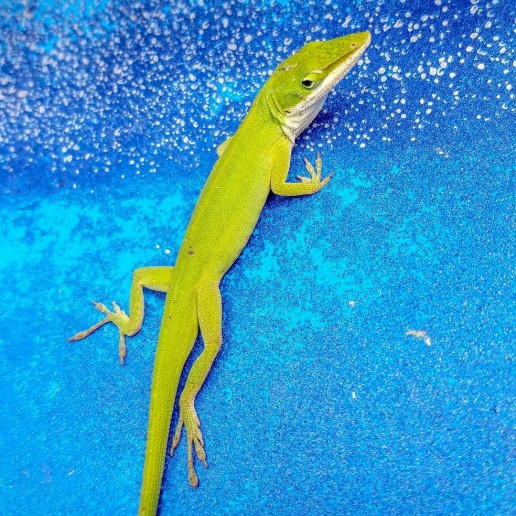
The biodiversity of the Florida Everglades is one of its most cherished traits. Everglades reptiles big and small reside in this ecosystem, beside the many wading birds and among the different habitats. The Everglades can appear so massive on an airboat ride that it can be easy to overlook the little things. If that happens, then look closer, because those little things may just be great at hiding.
Marjory Stoneman Douglas: Defender of The Everglades
You may know that the Florida Everglades spans over 2 million acres. But did you know that it was once over 11 million acres in size?
That remaining 2 million acres is there thanks in large part to the efforts of Marjory Stoneman Douglas.
After publishing her famous book, “Everglades: River of Grass”, she worked to raise awareness of the Everglades ecosystem. She also pushed back against development in the Everglades, and devoted much of her 108 years to protecting it.
Arrival in Miami
Born April 4, 1880 in Minneapolis, Minnesota, a short and ill-fated marriage got Marjory to reunite with her father in Miami in 1915. Her father was the founding publisher at the Miami’s first newspaper, known today as The Miami Herald. She served in the Navy Reserve during World War I, and was the first woman in Miami to enlist. Marjory left the Herald in 1923 and worked as a freelance writer, which lead to the writing of her most famous work.
The Everglades: River of Grass
While working as a freelance writer in the 1940’s, Marjory was approached to write about the Miami River. As she researched the story, she became fascinated with the Everglades and began researching them too!
In 1947, Marjory published “The Everglades: River of Grass” The book details the system of water flow from the Kissimmee River through Lake Okeechobee into the Everglades. Marjory explained that the Everglades wasn’t the swamp that most people though it was, but a slow-moving river!
From Writer to Conservationist
With the attention and support she received upon the publishing of “River of Grass”, Marjory became directly involved with Everglades conservation. She devoted herself to preserving the sheet flow of the Everglades and educating people all over Florida to be aware of its importance. In doing so, she rallied many to Everglades conservation, which lead to the founding of Friends of the Everglades in 1970, which Marjory was the head of.
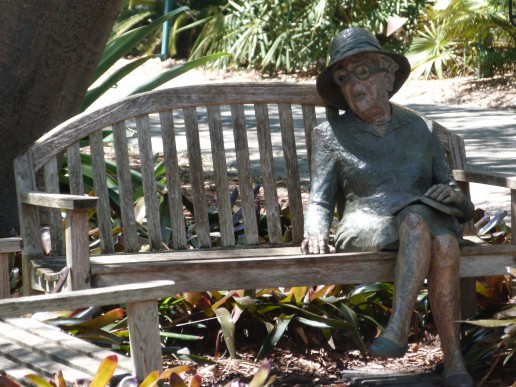
The legacy of the Gladesmen Culture is traditions built upon the marshes and limestone of the Everglades. The passion, commitment, and drive of Marjory Stoneman Douglas forged her legacy, which is the preservation of this ecosystem. Without her tremendous efforts, the Everglades would be just a memory. When you visit Mack’s Fish Camp, we get to share both of our legacies with you.
5 Surprising Facts About Alligators
Alligators may not be colorful like herons, or be cute and small like green tree frogs. But the power, agility, and strong presence they display in the wild fascinate both locals and Everglades visitors alike. Taking an airboat eco tour, you can learn many interesting things about Everglades alligators. For now, here are a few things you might not know about these living dinosaurs.
They Can Jump… and Climb!
In addition to being nimble swimmers, alligators can jump six feet into the sir from a resting position! This leaping ability is mostly for ambushing prey near the water. But they can use it to grab onto tree branches and climb to their prey.
Having that much mobility could mean one of the most dangerous places to be is between an alligator and a meal. Don’t worry, though. They have a natural fear of people, which is fortunate because…
Alligators are Fast Runners
Alligators prefer to stay in or near water, and their strong tails help them swim at a speed of up to 20 to 30 miles per hour (MPH). But if they see a potential meal hanging out near the edge of the water, they can bolt after it on land. As big and heavy as they are, alligators are capable of moving in short bursts up to 15 MPH on land.
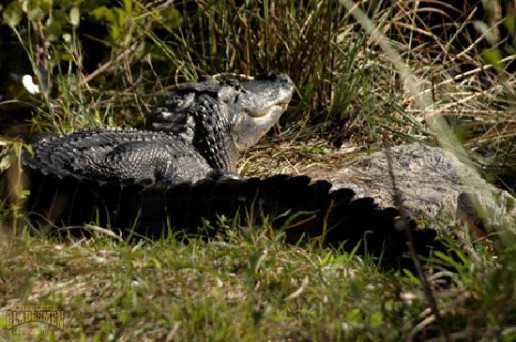
The Sex of an Alligator is Determined by the Temperature of its Nest
Like some reptiles, the temperature of an alligator’s nest determines whether the alligators will be male or female. A temperature below 82.4 degrees Fahrenheit will produce females, and a temperature above 91.4 degrees Fahrenheit will produce males. An even number of both males and females will be produced if the temperature is near 87.8 degrees Fahrenheit.
They Help Maintain the Everglades Ecosystem
Despite their beastly hunting instincts and solitary nature, Everglades alligators give back to their community, whether they realize it nor not. In fact, that solitary nature helps other Everglades wildlife thrive.
When alligators make their homes, called alligator holes, they clear old vegetation away in the marsh. This makes room, for new growth after they abandon their dwelling. Abandoned alligator holes also serve as an oasis to birds and fish during the Everglades dry season, when water becomes scarce.

Everglades alligators are not only the most iconic of all the animals here, but the most significant. While they are wild animals and formidable predators, their shyness around humans makes them perfectly safe to view on an Everglades airboat tour.
Just don’t feed them, or even your running shoes might not save you
Everglades Wildlife Profile: Amphibians
Out of the over 350 animal species living in the Everglades, longer animals like alligators and Burmese pythons get all of the attention, but what about the little guys?
No, not the mosquitoes.
If you look closely, there are frogs, toads, newts and other species of amphibians you can spot on an Everglades eco tour. Amphibians are a class of Everglades wildlife that are as big a part of this environment as wading birds or snakes.
Information About Amphibians
Amphibians are cold-blooded animals that can live on land and in water. In fact, their name comes from the Greek word “amphibios”, which means ”both kinds of life.” When amphibians are young, they spend the first half of their lives solely in the water, then on land after they have physically matured.
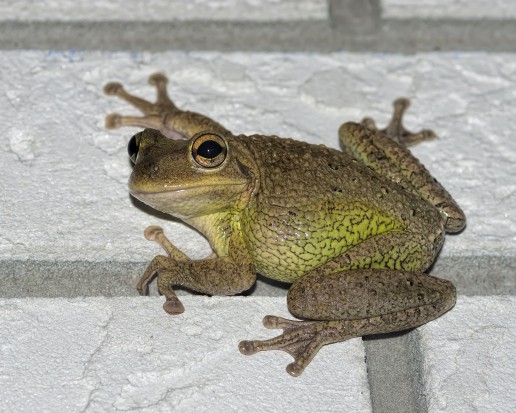
Differences From Reptiles
Unlike reptiles, that prefer to be in or near water, amphibians don’t have a thick outer layer of skin, but a soft thin skin that has to remain wet. Many amphibians can actually breathe through their skin as well as through their lungs.
Amphibians In the Everglades
Residing in wet, humid, and moist habitats, amphibians are a class of Everglades wildlife that are right at home here! Dwelling and nesting near water helps define their role in the Everglades food web. Like their skin, amphibians’ eggs are very soft and need to remain in water. Amphibians and their eggs are a food staple of many Everglades wading birds, like herons and wood storks. But, amphibians feed on insects like mosquitoes, who also lay their eggs in bodies of water.
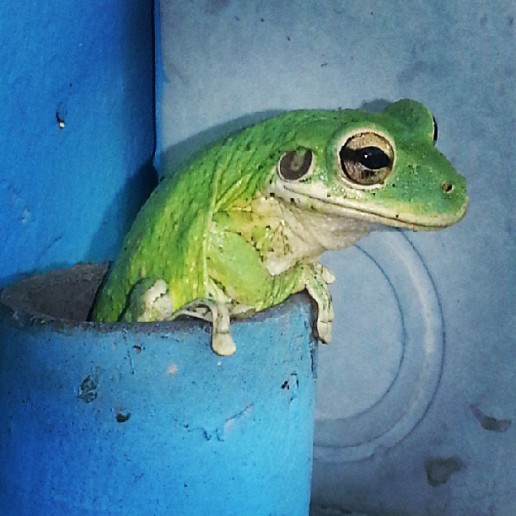
They’re Most Active During Everglades Wet Season
The time of year that amphibians are most active in the Everglades is during the wet season, which lasts from May through November. The abundant moisture and humidity, and the increased activity of insects allow amphibians to thrive. No matter how many frogs and toads you might see, you’ll hear hundreds more croaking and chirping.
The best way to see amphibians like the green tree frog, everglades dwarf siren, and the many other species of Everglades wildlife here is on an airboat ride. On an everglades eco tour, you can observe the biodiversity of this unique environment while learning from true-born Gladesmen that have lived here for generations.
Why the Best Everglades Fishing is at Mack's Fish Camp
South Florida is a paradise for fans of the outdoors, especially those who love fishing. The Everglades has an ecosystem that is home to large numbers of Peacock bass and largemouth bass, along with other species like Florida gar and tarpon.
A popular fishing spot, the Everglades holds a record for the most fish caught per person per hour, which is impressive when taking into account Florida’s many lakes and rivers.
If you’re a professional angler or it’s your first time fishing, here’s how you can have the experience of a lifetime Everglades fishing at Mack’s Fish Camp in Miami.
Land a Lunker On a Jon Boat Rental or Guided Fishing Tour
At Mack’s Fish Camp we have everything you need to have a fun and successful Everglades fishing trip. We offer jon boat rentals, and sell tackle, beverages and snacks at our store. But, if you’d like to have some help navigating the Everglades, and are up for some exploration while you do, Mack’s Fish Camp offers airboat bass fishing guide service.
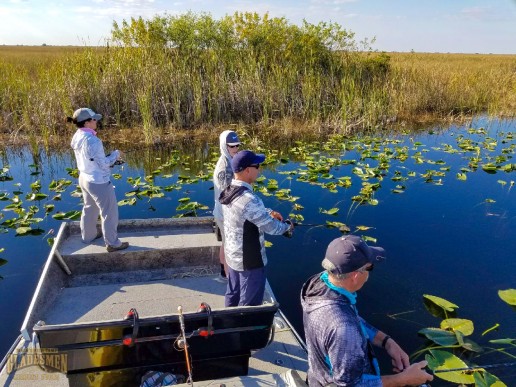
Gladesmen who have fished the Everglades since they were born will be your knowledgeable guides, showing you both great fishing spots and the unique beauty of the River of Grass. On this 4-hour Everglades fishing trip, you’ll be provided with tackle, fishing rods and reels, sunscreen, bug spray, and a cooler packed with refreshments from our store.
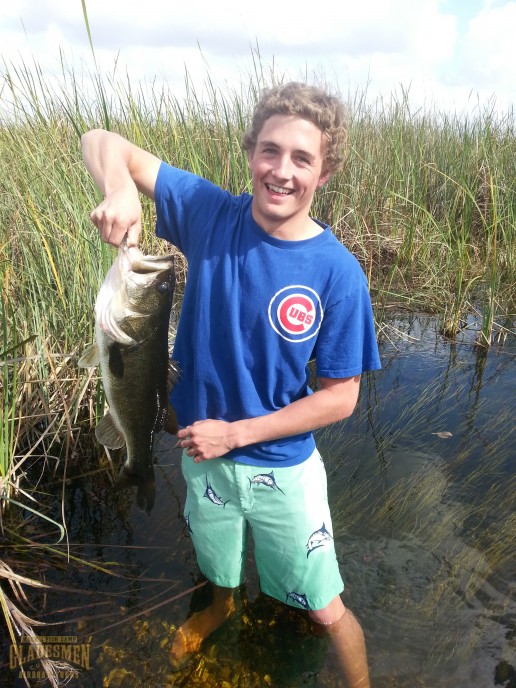
Everglades Airboat Bass Fishing
Bass fishing on an airboat has its own distinct advantages. Because airboats move by a propeller that’s above the water, their movement doesn’t disturb fish as much as traditional boat motors do. Also, airboats can navigate over shallow water in marshes, allowing more access to areas of the Everglades than regular boats can.
But in addition to an amazing fishing trip, you’ll be treated to an to an airboat ride where you’ll see many species of Everglades wildlife up close. The Everglades is home to many birds like egrets, roseate spoonbills, great blue heron, and is the only place in the world where alligators and crocodiles coexist.
Bass fishing in the Everglades provides a great time in truly unique and beautiful place. At Mack’s Fish Camp, taking an Everglades fishing trip while enjoying an airboat ride provides a thrill for the whole family. Whether fishing alone or with a guide, the Florida Everglades provides plenty of great weather, incredible scenery, and of course, plenty of fish!
Mosquitoes In The Everglades
Mosquitoes are easily the most disliked animal in the Florida Everglades. Their buzzing and biting makes them a nuisance to people, especially during the Everglades wet season. While taking an Everglades eco tour, you may be surprised to learn that even they play a part in maintaining their environment. But here is some information about these insects to help you understand them and prepare for them before your Everglades visit.
Some Information About Mosquitoes
Mosquitoes are easily are most abundant during the Everglades wet season from May through summer. But their numbers drop significantly during the drier winter months. The wet summer months see peak mosquito activity because both their larvae and eggs can only thrive in water.
Male mosquitoes only feed on flower nectar.
Females bite animals for protein to develop their eggs.
A nuisance only to humans, the mosquito is a vital link in the Everglades food web. By laying their eggs in the water, their larvae are a food source for fish, turtles, frogs, wading birds, and other insects.
Mosquito Safety In the Everglades
Given the abundance of mosquitoes in the Everglades, you should take precautions to avoid their bites as best you can. When you take an Everglades eco tour or any other private airboat tour at Mack’s Fish Camp, we do provide bug repellent. But here are some tips to avoid mosquito bites when you visit the Everglades.
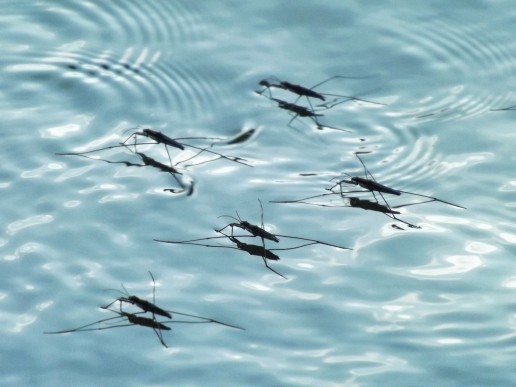
- Stay in the sun and avoid shaded areas. Those tiny vampires love shady spots.
- Don’t breathe… heavily. Mosquitoes are attached to carbon dioxide, and the harder you breathe out, the easier it is for them to find you.
- Wear light colored clothing. In addition to being a good fashion choice for the Florida sun, mosquitoes are less attracted to them. They are drawn to darker colored clothes like navy blue, black, or red.
- Avoid dense vegetation and bodies of standing water. Mosquitoes are concentrated in these areas (vegetation) or are their breeding grounds (water).
The Everglades is Zika-Free
While they are known carriers of disease, there have been no reported cases of mosquitoes in Everglades carrying the Zika virus. In fact, after collecting over 400,000 mosquitoes in the Everglades, a team of Yale scientists found no Aedes egyptii species, the known carriers of Zika.
Though considered a pest to people, mosquitoes are a valued part of the Everglades ecosystem. If they prove too overwhelming when you visit the Mack’s Fish Camp, then maybe you should explore it on an Everglades eco tour. A mosquito may be able to fly 40 miles for a snack, but it sure can’t keep up with an airboat!
Everglades Snakes
The Florida Everglades can evoke images of many different animal species like alligators and egrets, but not snakes so much. Among the hundreds of species of Everglades wildlife that dwell here, there are 29 species of snakes, only 4 of which are venomous. They may not stand out like a roseate spoonbill or a bull alligator, but you could spot one lurking in the marshes and tree islands on an everglades airboat tour.
The Everglades offers the exciting opportunity for all visitors to see a unique environment and the animals that live there up close and in person. Like the other wildlife here, snakes play a vital role in the ecosystems of the Everglades. Whether you’re looking to visit the ‘glades, are just curious about Everglades snakes, and maybe wondering which ones to avoid, here’s some information about these reptiles.
Non-Venomous Everglades Snakes
Red rat snake – these constrictors can climb trees and are found in hardwood hammocks. Their reddish-orange to brownish-yellow patterning outlined in black makes them easy to spot. But, they’re known to spend time underground mostly.
Eastern Garter Snake – Averaging at 18-26 inches long, these snakes are recognized by the three yellow stripes that run down their bodies. They prefer moist areas like the sawgrass marshes to feed on small frogs, fish, and salamanders.

Scarlet King Snake – This snake bears a strong resemblance to the highly venomous coral snake, but is distinguished by its red, pointy nose. It gets its royal name because it can eat venomous snakes without being affected by their venom.
Burmese Python – This exotic invasive species has recently passed the American Alligator as the apex predator of the Everglades. With an average length of 10 – 18 feet, the Burmese python is the third largest living snake in the world! These snakes arrived in the Everglades as abandoned pets.
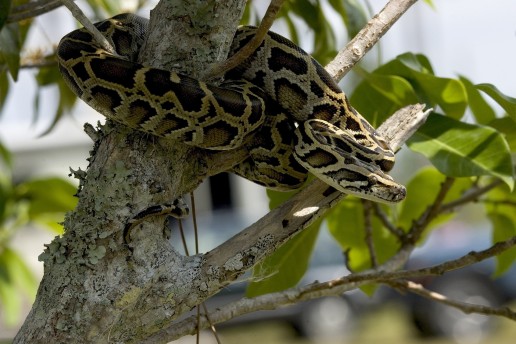
Venomous Everglades Snakes
As was mentioned earlier, there are only 4 species of venomous snakes that reside in the Everglades.
Coral Snake – A pretty sight to behold, the coral snake is a bright and colorful blend of red, black, and yellow. Preferring to stay underground, they are rarely spotted and difficult to see. Though they account for less than 1% of all snake bites, the coral snake is highly venomous.
Pygmy Rattlesnake – pygmy rattlesnakes have thick, greyish bodies with dark blotches on their backs, making them hard to spot. They are among the smaller species of rattlesnakes, averaging between 14-22 inches long. Pygmy rattlesnakes prefer swamps and sawgrass marshes, but can be found in other habitats.
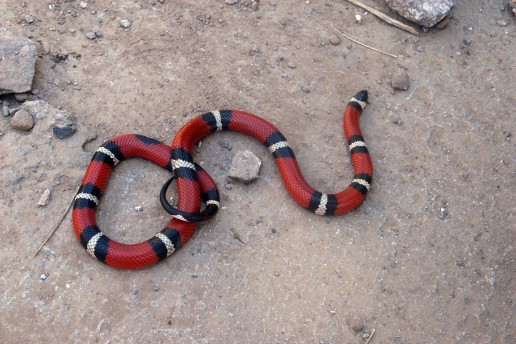
Florida Cottonmouth – Also known as the water moccasin, the Florida Cottonmouth is the only venomous water snake in North America. The Florida Cottonmouth can be identified by the dark bands that run down from each eye and their dark reddish to greyish, thick bodies. These strong swimmers are found in other habitats.
Eastern Diamondback Rattlesnake – Reaching up to 7 – 8 feet long, the Eastern Diamondback Rattlesnake is the largest venomous snake in North America. They are tan to greyish with a black diamond pattern on their backs, and their tails are tipped with a large rattle. Diamondback Rattlesnakes can be found in the drier habitats of the Everglades, like sandhills are hammocks.
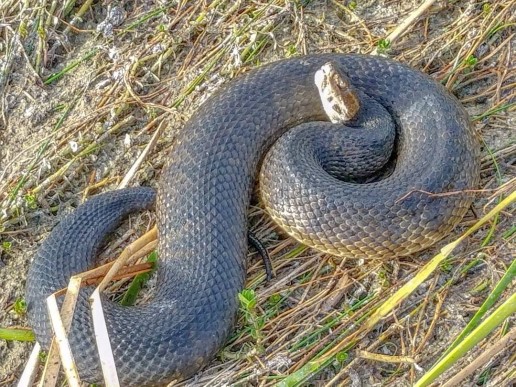
As menacing as they may look to some, snakes play their part in the Everglades food web. Everglades snakes regulate insect and rodent populations, and even other venomous snakes by eating them! Though they are often shy, you’re likely to see them among the many other varieties of wildlife on an Everglades airboat tour at Mack’s Fish camp.

